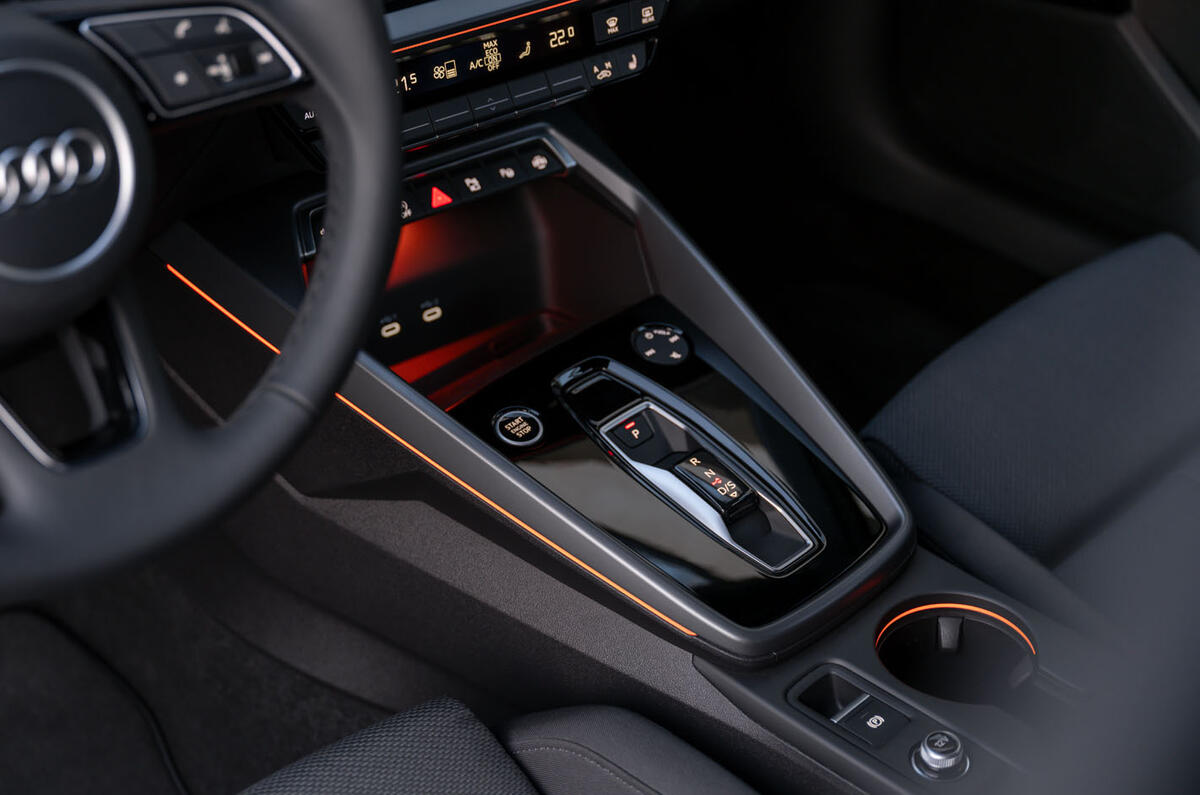Anyone stepping out of the relatively minimalist cabin of the previous A3 and into this new one will be in for a shock, albeit mostly a pleasant one. There is a wider variety of materials and a dashboard that is, to a degree, split in two, with a more driver-focused design.
Audi acknowledges that this generation of A3 has been criticised since launch in 2020 for the finish and design of its interior, and so the priority for its mid-life update was to give the cabin a quality and charisma boost. So there are now illuminated door panels (30 colours available), redesigned air vents with optional chrome surrounds, a smaller gear shifter and a raft of new upmarket materials and colour schemes.
Plus, the infotainment runs the latest generation of Audi’s infotainment platform – giving access to inbuilt apps and various paid-for functions on demand – and the standard kit list has been extended to include a wireless phone charger, ambient lighting and comfort air-con.
The result is a cabin environment which straddles the contentious digital-physical divide to great effect. The touchscreen – nicely integrated and unobtrusive as it is – is crisp of graphic and swift of processing speed, with its menus laid out sensibly and easy access provided to the functions you’ll want to use on the move. But it’s far from omnipotent, with the A3 retaining a healthy smattering of toggles, switches and buttons across the dash, console and steering wheel - each sensibly placed and with a satisfying tactility about it.
Top marks, too, for the ADAS integration; you only need to press one physical button to bring up the electronic driver aids, so turning off the speed limit and lane-keep bongs is the work of five seconds.
As in other smaller models in the Audi range, there isn’t a secondary touchscreen for the climate control settings. Instead, there’s a small cluster in the lower section of the dashboard with easy-to-reach physical buttons that make frequent adjustments possible without glancing away from the road. This is the preferable set-up in our opinion.
Aside from that, there’s 6mm more elbow room in the front than the pre-2020 car, and 3mm more in the rear, thanks to an increase in the car’s width. A 7mm increase in front head room and 2mm more shoulder room are also welcome, if small, improvements.
The boot capacity of the A3 remains the same as in the previous generation, at 380 litres, and this increases to 1200 litres when the rear seats are folded forward. From Sport specification up, these are split 40:20:40, rather than 40:60.









































